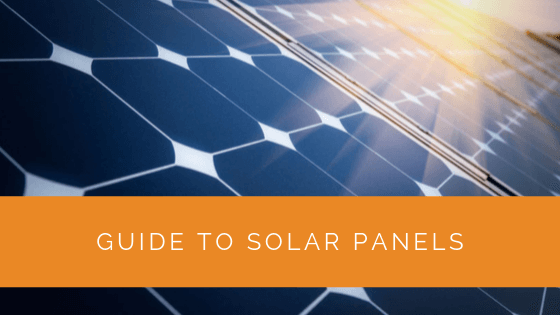More homeowners are choosing to convert to solar power. If you are interested in powering your home with a source of energy that is much better for the environment and much more cost-efficient, you should think about installing a solar power system.
Before making such a big decision, it is good to know more about this power source, including how it runs and the benefits you can reap.
Contents
- 1 Key Takeaways
- 2 What Is Solar Power?
- 3 What Are Solar Panels?
- 4 How Do Solar Panels Work?
- 5 What Are the Pros of Going Solar?
- 6 What Are the Cons of Going Solar?
- 7 What Do You Need to Consider When Going Solar?
- 8 Will I Need to Have the Panels Installed on the Roof?
- 9 How Big of a Roof Do I Need to Have?
- 10 What Is the Difference Between Grid-Tied and Off-Grid Solar?
- 11 How Much Do Solar Panels Cost?
- 12 How Much Can I Save on My Energy Bills with Solar Power?
- 13 What Are the Different Types of Solar Panels?
- 14 What Is a Solar Array?
- 15 What Are the Parts of a Solar Energy System?
- 16 Solar Panels Vs. Solar Roof Tiles
- 17 How to Choose the Right Solar Panel Installer
- 18 Experience Solar Excellence with Us!
Key Takeaways
- Solar power relies on natural sunlight to generate electricity through solar panels, offering a cost-efficient and eco-friendly home energy source.
- Solar panels absorb sunlight and convert it into electricity, reducing energy bills and creating a cleaner environment.
- Homeowners should consider factors like installation costs, available space, and choosing between grid-tied and off-grid systems when deciding to go solar.
What Is Solar Power?
Solar power is an energy source that relies on natural sunlight to bring power to a home. The energy directly from the sun is converted into electricity that homeowners can use to turn on lights, watch television, or even charge their phones. A solar power system consists of several important components, including solar panels and inverters that help convert sunlight to electricity.
What Are Solar Panels?
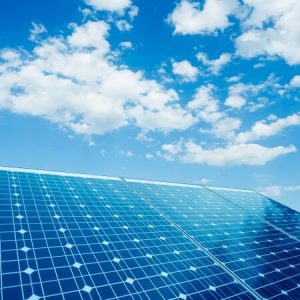 Solar panels are specific panels commonly found on roofs of homes that rely on solar power. These panels play a significant role in providing a home with solar power. It needs to have electricity throughout each room. After they are installed on the roof of a home, the solar panels will continuously absorb light from the sun. The absorption of the sun’s light will help naturally create electricity without using harmful, toxic gases and chemicals.
Solar panels are specific panels commonly found on roofs of homes that rely on solar power. These panels play a significant role in providing a home with solar power. It needs to have electricity throughout each room. After they are installed on the roof of a home, the solar panels will continuously absorb light from the sun. The absorption of the sun’s light will help naturally create electricity without using harmful, toxic gases and chemicals.
How Do Solar Panels Work?
Solar panels work in such a simple yet efficient way. When the sun shines, the panels absorb all the light that comes from it and use it as energy. The light helps create a direct current sent straight to the inverter. Once the inverter receives the direct current, it produces an alternating current, providing power to a home. Because of the panels and other additional components, homeowners can easily keep the electricity running inside the home.
What Are the Pros of Going Solar?
The advantages of going solar are tremendous. Homeowners are often looking for ways to save money on their energy bills. By going solar, they can reduce the amount of money spent on assorted energy bills each month. Investment and state tax credits and cash rebates are also available. These are a few of the pros that are associated with the use of a solar power system and the best solar panels available:
Low Monthly Bills
Having power in the home will no longer cost you thousands of dollars each year. If you once dreaded electricity bills sent to the home, you will look forward to seeing the low cost of your monthly bills after you decide to switch to solar energy.
Eco-Friendly
It is a lot better for the environment. Other energy sources are not as eco-friendly. When gases help to heat a home and provide power, those gases will often get released into the air, contributing to air pollution. By going solar, you can do your part in helping keep the air clean while preventing additional air pollution.
Choice
You can choose the type of system you want. Different types of solar energy systems are available. You can get information on the different options and choose the most suitable system installed on your property.
What Are the Cons of Going Solar?
While there are many advantages of going solar, there are a few cons that you should know about in advance. These are some of the cons associated with going solar:
Fees
The upfront fees for the solar power system. You may need to invest when having a solar power system installed. Not everyone is willing to spend thousands of dollars to go solar. Although the upfront fees are hefty, you will eventually earn back everything you have invested by saving on monthly energy bills.
Space Required
The system can take up a lot of space. When you are limited in your space, you might not like having a system that will take up space on your roof and in your backyard.
Although some cons exist, you need to consider both the advantages and disadvantages before deciding. You may feel that the good outweighs the bad when going solar.
What Do You Need to Consider When Going Solar?
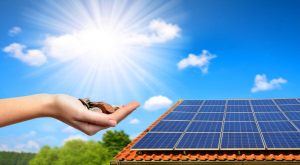 If you are considering going solar, consider a few different things beforehand. You might want to ask these questions, such as how many solar panels you will need. The answers to these questions could help you decide if you want to go solar.
If you are considering going solar, consider a few different things beforehand. You might want to ask these questions, such as how many solar panels you will need. The answers to these questions could help you decide if you want to go solar.
Will I Need to Have the Panels Installed on the Roof?
You have likely noticed that many homeowners have their solar panels installed on the roof. You might want to know if you need to install these panels on your roof, too. However, it all depends on the size of your roof. If you have a small roof or are not in the ideal position, install solar panels on the ground instead.
How Big of a Roof Do I Need to Have?
If you would rather install the panels on the roof instead of the ground, ensure your roof is at least 400 square feet. If not, you must talk to the installers about your options.
What Is the Difference Between Grid-Tied and Off-Grid Solar?
Grid-tied systems include solar panels, which also work with the electrical grid. The electrical grid is often used as a backup energy source when needed. Homeowners with grid-tied systems would rely on their solar panels and the electrical grid to get power in the home.
An off-grid solar system means you rely solely on your solar panels for electricity in the home. You are not relying on any electricity that comes from the utility company. Many homeowners like the idea of having an off-grid solar panel system because they do not want to deal with costly electricity bills that come from the utility company. Instead of relying on a utility company, they receive their electricity from a renewable source.
How Much Do Solar Panels Cost?
The cost of solar panels will vary. Solar tax credits are available to make switching to solar energy more affordable. It can cost up to $14,000 for the solar panels and the full system installation that homeowners would need to use to begin relying on solar panels for the home completely. While this may seem like a high amount to some, it is worth the investment because of the savings from making the switch over time.
Solar Panel Costs by State
| State | Starting cost for 6-kW system | Average cost per watt | 2020 federal tax credit value (26%) | 2021 federal tax credit value (22%) |
|---|---|---|---|---|
| Alabama | $13,706 | $2.45 | $3,564 | $3,015 |
| Alaska | $13,454 | $2.41 | $3,498 | $2,960 |
| Arizona | $13,680 | $2.67 | $3,557 | $3,010 |
| Arkansas | $14,713 | $2.63 | $3,825 | $3,237 |
| California | $15,240 | $2.68 | $3,962 | $3,353 |
| Colorado | $17,100 | $2.44 | $4,446 | $3,762 |
| Connecticut | $15,540 | $2.86 | $4,040 | $3,419 |
| Delaware | $15,300 | $2.65 | $3,978 | $3,366 |
| Florida | $13,920 | $2.41 | $3,619 | $3,062 |
| Georgia | $15,840 | $2.33 | $4,118 | $3,485 |
| Hawaii | $19,560 | $2.67 | $5,086 | $4,303 |
| Idaho | $17,100 | $2.52 | $4,446 | $3,762 |
| Illinois | $16,740 | $2.57 | $4,352 | $3,683 |
| Indiana | $15,300 | $2.49 | $3,978 | $3,366 |
| Iowa | $14,160 | $2.53 | $3,682 | $3,115 |
| Kansas | $13,353 | $2.39 | $3,472 | $2,882 |
| Kentucky | $13,101 | $2.34 | $3,406 | $2,882 |
| Louisiana | $15,660 | $2.38 | $4,072 | $3,445 |
| Maine | $16,073 | $2.87 | $4,179 | $3,536 |
| Maryland | $15,540 | $2.74 | $4,040 | $3,419 |
| Massachusetts | $16,440 | $2.87 | $4,274 | $3,617 |
| Michigan | $16,020 | $2.66 | $4,165 | $3,524 |
| Minnesota | $17,280 | $2.74 | $4,493 | $3,802 |
| Mississippi | $14,763 | $2.64 | $3,838 | $3,248 |
| Missouri | $14,461 | $2.59 | $3,760 | $3,181 |
| Montana | $16,560 | $2.42 | $4,306 | $3,643 |
| Nebraska | $15,820 | $2.83 | $4,113 | $3,480 |
| Nevada | $14,760 | $2.61 | $3,838 | $3,247 |
| New Hampshire | $17,460 | $2.83 | $4,540 | $3,841 |
| New Jersey | $14,520 | $2.77 | $3,775 | $3,194 |
| New Mexico | $16,680 | $2.44 | $4,337 | $3,670 |
| New York | $15,900 | $2.86 | $4,134 | $3,498 |
| North Carolina | $14,040 | $2.49 | $3,650 | $3,089 |
| North Dakota | $13,555 | $2.42 | $3,524 | $2,982 |
| Ohio | $14,400 | $2.50 | $3,744 | $3,168 |
| Oklahoma | $14,667 | $2.62 | $3,813 | $3,227 |
| Oregon | $15,060 | $2.50 | $3,916 | $3,313 |
| Pennsylvania | $15,420 | $2.38 | $4,009 | $3,392 |
| Rhode Island | $16,200 | $2.69 | $4,212 | $3,564 |
| Sourth Carolina | $16,500 | $2.62 | $4,290 | $3,630 |
| South Dakota | $13,535 | $2.39 | $3,519 | $2,978 |
| Tennessee | $13,909 | $2.49 | $3,616 | $3,060 |
| Texas | $14,820 | $2.60 | $3,853 | $3,260 |
| Utah | $15,420 | $2.66 | $4,009 | $3,392 |
| Vermont | $16,620 | $2.85 | $4,321 | $3,656 |
| Virgina | $15,780 | $2.66 | $4,103 | $3,472 |
| Washington | $14,040 | $2.73 | $3,650 | $3,089 |
| West Virgina | $14,763 | $2.64 | $3,838 | $3,248 |
| Wisconsin | $17,580 | $2.60 | $4,571 | $3,868 |
| Wyoming | $14,360 | $2.57 | $3,734 | $3,159 |
The starting cost for a 6-kW system is before tax credits, according to EnergySage and Solar Reviews.
The average cost per watt is according to Solar Reviews
How Much Can I Save on My Energy Bills with Solar Power?
You can save a lot of money by relying solely on solar power. While the exact savings will vary from one household to the next based on location and usage, most homeowners will save around $400 each year by going solar. However, some homeowners will save up to $ 2,000 yearly on energy bills. Being able to save thousands of dollars is often convenient for homeowners and makes them more excited about the switch. If you are relying on solar power, you will not receive the incredibly high utility bills that come with the hot and cold weather.
What Are the Different Types of Solar Panels?
When considering investing in a solar panel for your home or a portable solar panel, conducting thorough research is imperative. Go for a panel that will meet your energy needs. There are three common types of solar panels, each made uniquely and with different features. They are:
Monocrystalline Silicon Panels
Also known as single-crystalline cells, monocrystalline silicon panels are made from pure silicon. Silicon is used to produce long rods, which are then cut into wafers that produce solar cells.
Monocrystalline silicon panels produce the highest efficiency ratings of around 17-22%. You can identify this panel by the shapes of the square-shaped wafers, which appear pure black and are aesthetically pleasing.
Polycrystalline Silicon Panels
Also referred to as multi-crystalline panels, polycrystalline silicon panels are standard among homeowners on a budget. They are less efficient than monocrystalline silicon panels.
Polycrystalline silicon panels appear blue when installed and have an efficiency rating of 15-17%. They produce slightly less energy than monocrystalline silicon panels. These panels are produced from silicon crystals cut into wafers to produce PV cells.
Thin-film Solar Cell Technology
Thin-film solar cell technology panels are completely different from polycrystalline silicon panels and monocrystalline silicon panels as they don’t contain any silicon cell outlines. Thin-film solar cell technology uses plastic, metal, or glass substrate.
These materials make the panels lightweight and flexible. The efficiency of thin-film cells ranges between 10-13%. They come in either black or blue hues and are common in industrial setups.
What Is a Solar Array?
The solar array is a type of system that you can choose when deciding to go solar. It consists of multiple solar panels that are put together to provide enough power to the property. Most homeowners would need an array of up to 20 solar panels. The number of panels needed to form the solar array for a homeowner would depend on various factors, including the size of the home.
What Are the Parts of a Solar Energy System?
A solar energy system consists of several essential parts. These parts work together to provide power to a home and would include:
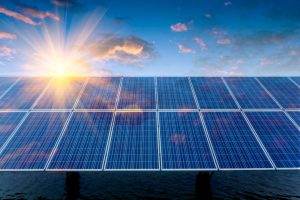
Solar panels
The solar panels are the most obvious and important part of the solar power system. The panels soak up the light from the sun. You can usually find them on rooftops, but there are times when homeowners have them installed on the ground.
Mounting System
To get as much electricity as possible, multiple solar panels must be installed together to form a solar array. The mounting racks keep these panels together.
Inverter
Like solar panels, the inverter plays an important role in producing solar energy. It converts the direct current into the alternating current to bring electricity to the home.
Backup System
Those who do not rely on the electrical grid can benefit from a backup system consisting of a generator that would produce power when needed. This system would only be used when poor weather conditions and the sun has not been out for a while.
Batteries
It would be best to have solar batteries for your system to ensure you do not run out of power, even when it is dark outside. After all, it would be best to have light and heat after the sun goes down.
These are several of the important parts that work together to produce solar energy.
Solar Panels Vs. Solar Roof Tiles
Over the past several years, there has been more buzz over solar roof tiles. While solar panels were traditionally offered, homeowners now can get solar roof tiles if they want them. Before deciding if you prefer panels or roof tiles, you should know more about these options.
Solar roof tiles are meant to help homeowners conserve energy and save money while increasing the value of their properties. Like solar panels, the solar shingles would rely on an inverter to produce solar power while remaining connected to the electric grid as a backup source. However, solar roof tiles cost more money than traditional solar panels. Not only do they cost a bit more than the panels, but they are simply not as efficient. Solar roof tiles can still help you save money, but you will enjoy bigger and better savings when you install traditional solar panels in your home.
How to Choose the Right Solar Panel Installer
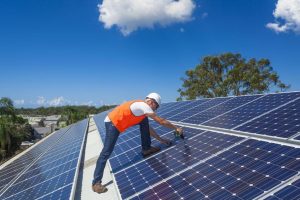 If you are ready to go solar, you must find an experienced solar panel installer to complete the job. When solar panels are not installed correctly, they will not do the intended job, so you need to ensure things get done the right way. The first step to finding the right solar panel installer involves finding providers in your area. You can list several providers with experience helping homeowners with the process of going solar.
If you are ready to go solar, you must find an experienced solar panel installer to complete the job. When solar panels are not installed correctly, they will not do the intended job, so you need to ensure things get done the right way. The first step to finding the right solar panel installer involves finding providers in your area. You can list several providers with experience helping homeowners with the process of going solar.
After finding a few installers, it is time for you to dig deep and do some serious research. Check out the websites of the installers to see what they are saying about solar power systems and the options they offer to their clients. View pictures of their work. Contact the installers directly to ask questions and get a better feel for their customer service. You should search for the names of the companies on Google to see if you can find any reviews that other people wrote.
It is also wise to ask if the installers provide financing options for you. Rather than paying for the solar panels and installation at once, you might be able to pay for everything in increments to save money while still converting to solar power. If you do enough research, you will find a reliable installer to help you make the change. The installer can let you know how long the installation process will take while keeping you informed of everything going on.
Experience Solar Excellence with Us!
Trust in Solar Panels Network USA, where our seasoned experts deliver top-quality solar solutions for homes and businesses nationwide. With a legacy of countless successful installations and a commitment to sustainable energy, we’re your reliable partner in the solar journey. Ready for a brighter, eco-friendly future? Call us now at (855) 427-0058 and harness the sun’s power!
About the Author
Solar Panels Network USA stands at the forefront of solar energy solutions, driven by a team of seasoned solar engineers and energy consultants. With over decades of experience in delivering high-quality solar installations and maintenance, we are committed to promoting sustainable energy through customer-centric, tailored solutions. Our articles reflect this commitment, crafted collaboratively by experts to provide accurate, up-to-date insights into solar technology, ensuring our readers are well-informed and empowered in their solar energy decisions.

